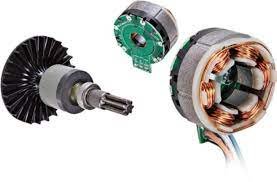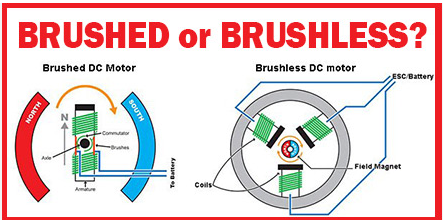
In the realm of electromechanical systems, motors stand as the fundamental components powering an extensive array of devices, from industrial machinery to household appliances. Among the diverse categories of motors, two primary types—brushless and brushed motors—occupy significant positions owing to their distinct operational mechanisms, efficiency, and applications. Delving into their functionalities, structures, and applications elucidates the nuanced differences that define their roles in modern technology.
The Fundamentals of Brushless Motors
Brushless motors, also known as BLDC (Brushless Direct Current) motors, represent a marvel in motor technology characterized by their efficiency and durability. Unlike their brushed counterparts, brushless motors lack physical commutators and brushes. Instead, they operate based on electronic commutation, where the rotor—typically composed of permanent magnets—aligns with the stator’s magnetic fields, leading to rotational motion.
Structure and Operation
The basic structure of a brushless motor comprises a stationary stator housing coils through which electric current flows, creating a magnetic field. The rotor, composed of permanent magnets or electromagnets, remains the moving part. This arrangement eliminates the need for brushes and commutators, reducing friction and enabling a more efficient transfer of power.
The operation of a brushless motor involves the use of sensors (Hall effect sensors or encoders) to determine the rotor’s position in relation to the stator. This information is relayed to the motor controller, which regulates the current supplied to the stator windings. By precisely timing the current flow in these windings, the motor controller ensures the rotor maintains its rotational motion smoothly.
Advantages and Applications

The absence of brushes and commutators in brushless motors offers several advantages. Firstly, it results in reduced friction, leading to higher efficiency and lower maintenance requirements. Additionally, brushless motors tend to exhibit higher power-to-weight ratios and are known for their durability and longevity due to the lack of physical contact between components.
The efficiency and reliability of brushless motors find applications across various industries. They power drones, electric vehicles, HVAC systems, industrial machinery, and even computer hard drives, where precision, efficiency, and reliability are crucial.
Understanding Brushed Motors
Contrary to brushless motors, brushed motors have a simpler design that incorporates physical commutators and brushes. This design has been prevalent for a long time and remains relevant in certain applications despite the advent of brushless technology.
Structure and Operation
The construction of a brushed motor includes a stator and a rotor. The stator houses wire coils that produce a magnetic field when electricity passes through them. The rotor, often equipped with winding coils or permanent magnets, rotates within the stator’s magnetic field. The physical commutator and brushes facilitate the flow of current to different coils in the rotor, creating a continuous rotation.
In a brushed motor, the brushes maintain contact with the commutator, periodically reversing the direction of current in the rotor coils. This reversal ensures the continuous rotation of the rotor, enabling the motor to function.
Advantages and Applications
Brushed motors possess simplicity in design and cost-effectiveness compared to brushless motors. They find applications in simpler devices like power tools, toys, household appliances, and certain automotive components. Their straightforward construction and ease of control make them suitable for applications where cost is a significant factor, albeit at the expense of efficiency and durability.
Comparative Analysis: Brushless vs. Brushed Motors
The differentiation between brushless and brushed motors extends beyond their structural dissimilarities and delves into several key aspects that impact their performance and application.
Efficiency and Performance
One of the primary disparities lies in efficiency. Brushless motors exhibit higher efficiency due to the absence of brushes, which minimizes energy losses through friction and heat dissipation. This efficiency results in lower power consumption and longer operational lifespans compared to brushed motors.
Moreover, brushless motors often offer higher torque-to-weight ratios, contributing to their superior performance in various applications where power and precision are critical. The precise electronic control of brushless motors also enables smoother operation and better speed control compared to the mechanical limitations of brushed motors.
Maintenance and Durability
The maintenance requirements for brushless motors are significantly lower than those for brushed motors. The absence of physical brushes and commutators reduces wear and tear, resulting in longer lifespans and decreased maintenance costs for brushless motors. Brushed motors, on the other hand, necessitate periodic brush replacement due to wear, leading to increased maintenance needs over time.
Cost Considerations
While brushless motors offer superior efficiency and durability, they often come with a higher initial cost compared to brushed motors. This cost discrepancy can influence the choice of motor type in various applications, especially where cost plays a crucial role in the decision-making process.
Evolution and Future Prospects
The evolution of motor technology continues to shape the landscape of various industries. Advancements in materials, manufacturing techniques, and electronic controls have contributed to enhancing both brushed and brushless motor designs.
In recent years, efforts have focused on improving brushless motor technology, aiming to reduce costs and enhance its applicability across a broader spectrum of industries. Research and development in materials science have led to the creation of advanced permanent magnets, contributing to improved efficiency and performance in brushless motors.
Simultaneously, innovations in brushed motor designs aim to enhance their efficiency and lifespan, making them competitive in applications where cost remains a primary consideration.
Conclusion
The dichotomy between brushless and brushed motors encapsulates the technological evolution within the realm of electromechanical systems. While both have their distinct advantages and applications, the shift toward brushless technology, driven by its efficiency, reliability, and precise control, marks a significant trend in various industries.
As technology advances, the boundaries between these motor types may blur as innovations seek to combine the efficiency of brushless motors with the simplicity and cost-effectiveness of brushed motors. Ultimately, the choice between these motor types in specific applications will continue to depend on a delicate balance between efficiency, cost, and performance requirements.
